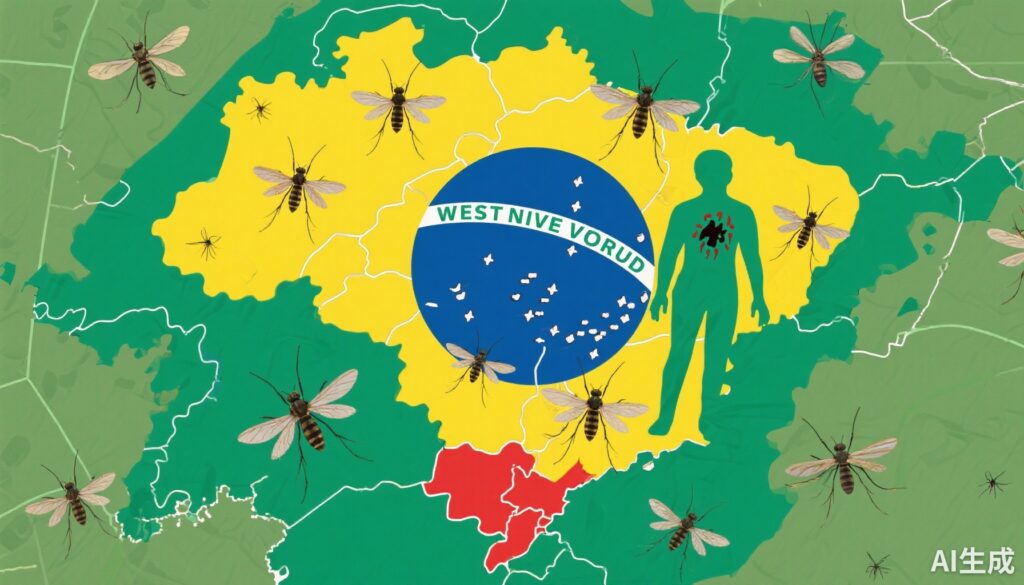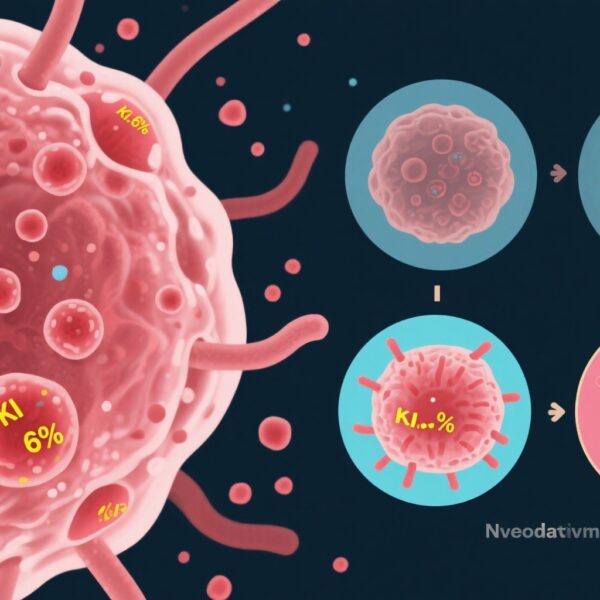Highlight
- West Nile virus (WNV) circulation in Brazil identified with 110 cases reported from 13 states over a decade.
- Retrospective analysis in Ceará State revealed 12.1% of febrile and neuroinvasive illness cases were WNV-positive, peaking in 2023.
- WNV lineage 1a confirmed as causative strain, including fatal infections in horses and humans, with neurological complications in nearly 43% of cases.
- Ecological niche models pinpoint high-risk areas in Brazil’s Northeast, aiding targeted surveillance and control efforts.
Study Background
West Nile virus (WNV) is a flavivirus transmitted primarily by mosquito vectors, notably Culex species, and is a recognized cause of neurological and systemic disease in humans and animals. Since its introduction to the USA in 1999, it has become the preeminent arboviral threat in North America. Despite this, South America—including Brazil—has not experienced major documented outbreaks until recent investigations. Given Brazil’s vast territory, varied ecological zones, and large population, understanding WNV epidemiology in this setting is crucial to anticipate public health risks and implement preventative strategies.
Study Design
This epidemiological study comprehensively reviewed West Nile virus activity in Brazil spanning January 2014 to December 2024. Data sources included epidemiological reports, molecular, genomic, and serological datasets. A focused retrospective cohort study was performed analyzing 561 patients with febrile illness, neuroinvasive symptoms, or deaths from Ceará State collected between 2019 and 2024 to detect active WNV infection. The methods encompassed molecular diagnostics (RT-PCR for viral RNA), serological assays (IgM detection), and genetic sequencing for phylogenetic analysis. Geographic information systems (GIS) and ecological niche modeling were employed to map transmission risk zones. Statistical tests analyzed demographic distributions, seasonal patterns, and clinical outcomes.
Key Findings
Between 2014 and 2024, 110 confirmed WNV cases were reported from 13 Brazilian states, signaling widespread but previously under-recognized virus circulation. In Ceará State, 12.1% of tested patients (68 of 561) had WNV infection, with an alarming peak incidence in 2023 when nearly half of the cases (29/68) occurred.
Clinical presentation varied: 10.3% (7/68) had detectable WNV RNA in serum or cerebrospinal fluid, confirming active replication, while 89.7% (62/68) were IgM seropositive indicating recent infection. Of these, neurological complications were significant—29 patients exhibited neuroinvasive disease manifestations such as meningitis or encephalitis. There were four fatalities, underscoring the virus’s potential lethality. Febrile illnesses accounted for 35 cases (51.5%).
Demographically, cases spanned all months but showed seasonality with highest case numbers from May to August, corresponding to the colder, drier season in Ceará which may influence mosquito ecology. Females slightly outnumbered males (female-to-male ratio 1.1:1) and median patient age was 40 years, implying risk across adult ages.
Phylogenetic analysis identified WNV lineage 1a circulating in Ceará, consistent with strains known in North America and globally. Notably, a fatal equine case linked genetically to human infections demonstrated zoonotic transmission and reservoir risk. Ecological niche models highlighted environmental hotspots, particularly in Brazil’s Northeast region, with conditions conducive to arbovirus transmission, such as vector abundance and suitable climatic variables.
Expert Commentary
This study compellingly provides the first comprehensive evidence of autochthonous WNV transmission in Brazil with both clinical and molecular confirmation. It challenges previous assumptions that WNV was largely absent or insignificant in South America, highlighting a silent and possibly expanding arboviral threat. The presence of neuroinvasive disease and fatalities calls for heightened clinical suspicion and diagnostic capacity in febrile and neurological syndromes.
The selection of Ceará as a focus site is pertinent given its ecological features favoring mosquito vectors. However, data gaps remain, including underreporting and likely missed asymptomatic or mild infections. The temporal clustering in 2023 suggests potential evolving dynamics influenced by vector ecology, climate, and human activity.
Limitations include a retrospective design at the patient level and incomplete serosurveillance in other Brazilian regions, limiting generalizability. Nevertheless, the phylogenetic data offer valuable insights into virus introduction pathways and lineage persistence.
Conclusion
This study establishes that West Nile virus is actively circulating in Brazil, with endemic transmission confirmed through epidemiology, serology, and genomics. The findings underscore an emerging public health challenge requiring enhanced surveillance, vector control strategies, and clinician awareness. Regions in Northeast Brazil represent priority areas for intervention.
Future research should focus on longitudinal surveillance, entomological studies to clarify vector competence, and comprehensive clinical characterizations to understand WNV morbidity and mortality. Public health policies must incorporate WNV risk assessment into arboviral disease frameworks to reduce disease burden in Brazil and the wider South American region.
Funding and Disclosures
This work was supported by grants from the Burroughs Wellcome Fund, the Wellcome Trust, the National Institutes of Health, the São Paulo Research Foundation, the Brazilian Ministry of Science, and the Brazilian National Council for Scientific and Technological Development. The authors declare no competing interests.
Reference
de Lima STS, Claro IM, Hua X, de Jesus R, Serres K, Simões Mello LM, Forato J, Moreira FRR, Kato RB, Guimarães GN, Scachetti GC, Andrade PDS, Duarte LMF, de Lima MET, Ferraz CPM, Vianna MPN, Santiago RM, Braga ELR, Carneiro IS, Carlos L Firmino A, Cabral MG, Souza C, Mello LP, Li S, Sabino EC, Sallum MAM, Weaver SC, Faria NR, Romano CM, Dellicour S, Proenca-Modena JL, de Souza WM. Active West Nile virus transmission in Brazil: an epidemiological study. Lancet Reg Health Am. 2025 Sep 8;51:101229. doi: 10.1016/j.lana.2025.101229. PMID: 40978564; PMCID: PMC12448031.


